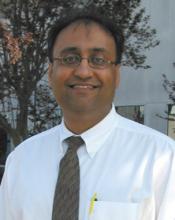Talking warfarin with patients? Keep it simple
She also stressed the importance of debunking other common myths, including that warfarin actually causes bleeding and that those on the drug should not eat vitamin K–rich foods like salads.
Pamphlets, video chats, and apps
As physicians work to better meet the needs of their patients, hospitals are simultaneously improving warfarin education outreach. The UC Davis Medical Center provides handouts explaining medication-related scenarios in 14 languages including English, Russian, and Mandarin. To ease confusion, the hospital keeps language at the elementary-school level.
"We try to get between the fourth and sixth grades in terms of written materials," said Dr. White. "You don’t want to present them at a high school or college level, because they just won’t understand."
There are weekly Coumadin classes in the anticoagulation clinic, where patients learn about the drug and blood-clotting tests, and discuss bleeding scenarios, among other concerns. The UC Davis Medical Center also provides trained medical interpreters to assist in physician-patient communication. When faced with a language barrier, the doctor can request an interpreter to provide translation services in person, or as part of a three-way conversation with the patient and physician using video technology similar to Skype. And an inpatient starting warfarin treatment triggers an education order that includes reviewing a hospital video about the pill, a strategy Dr. White questioned because sick patients may have trouble grasping the information.
At the University of California, Irvine, pharmacists run classes with patients, doctors educate family members when needed, and education materials are at the fifth-grade level. "We try to implement read-backs for the patients to tell us what we’ve talked to them about," said Dr. Alpesh Amin, professor and chairman of the department of medicine and executive director of the hospitalist program at UC Irvine.
Dr. Amin, who also serves as medical director of the anticoagulation clinic, said they take a multilayered approach to warfarin patient education that includes weekly education courses and policies and procedures focused on teaching patients during their transitions of care. He said they put "a lot of energy and effort" into maintaining standardized policies in how they run the anticoagulation clinic and educate patients.
When it comes to warfarin, patient education comes in many forms: from basic handouts with pill color and dosage to digital technologies. At Cedars-Sinai Medical Center in Los Angeles, staff uses a variety of patient reminder tools. Dr. John G. Harold, president-elect of the American College of Cardiology and attending physician at Cedars-Sinai Heart Institute, encourages his patients to use the CardioSmart Med Reminder app, which features medication reminder alerts.
Still, nothing can replace face-to-face interaction. Said Dr. Harold: "You just can’t hand materials to the patients without communicating with them directly."







